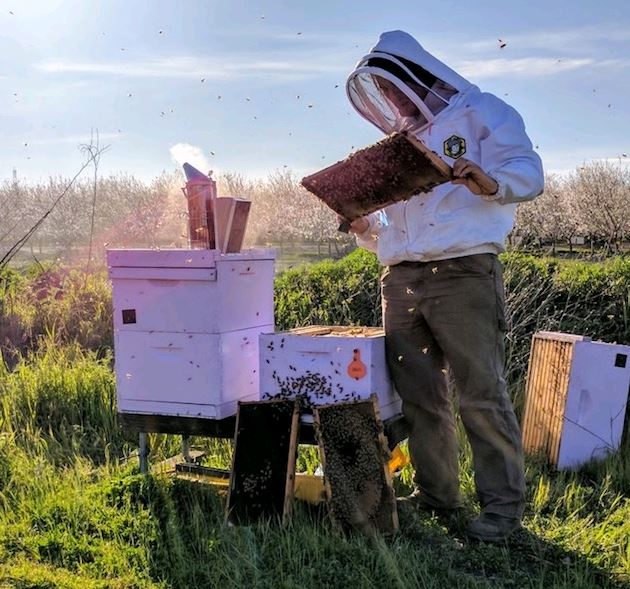Posts Tagged: colony
Squirrel Vs. Bees: Sorry, No Vacancy!
Call it “The Battle Over a Tree Hollow." Feral bees have occupied—and...
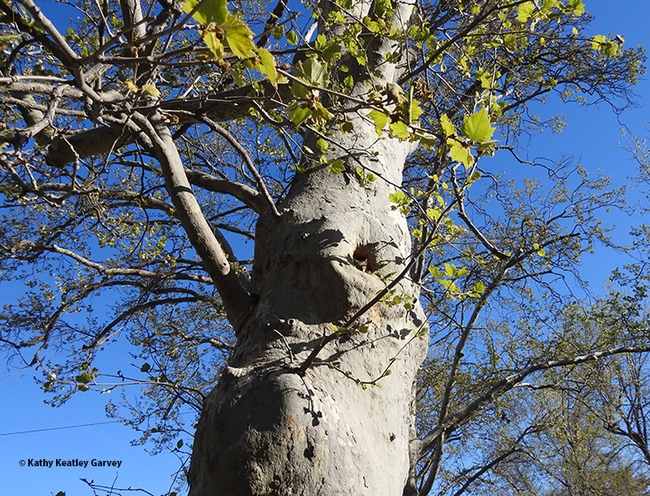
Look closely and you can see a squirrel occupying a small hollow or cavity in a sycamore tree. The cavity has been home to feral bees for at least two decades. (Image taken in Vacaville by Kathy Keatley Garvey)
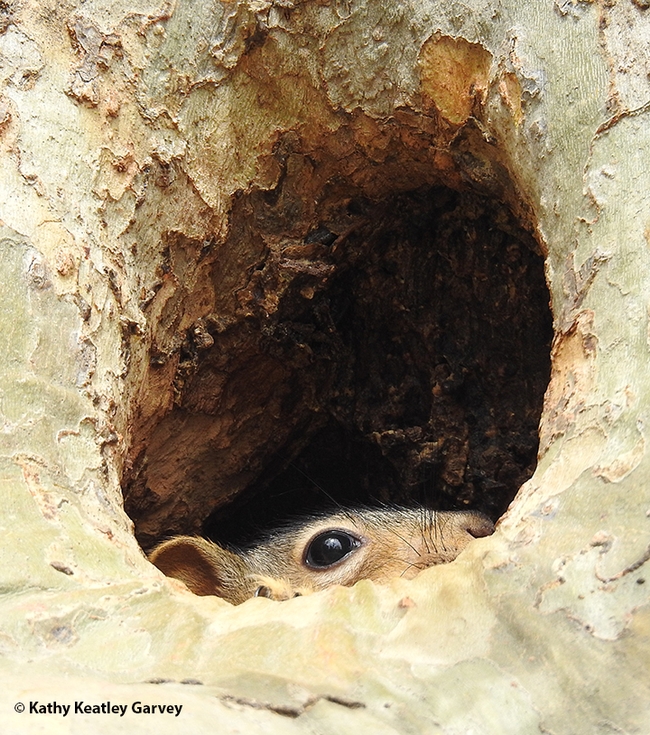
What's all that noise about? Can't a squirrel get some sleep? (Photo by Kathy Keatley Garvey)
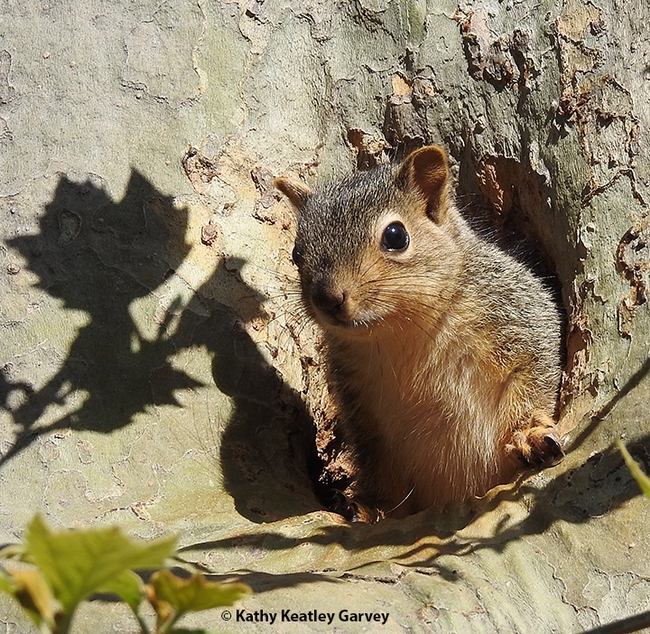
The squirrel pokes his head out of his home, his sleepy hollow. (Photo by Kathy Keatley Garvey)
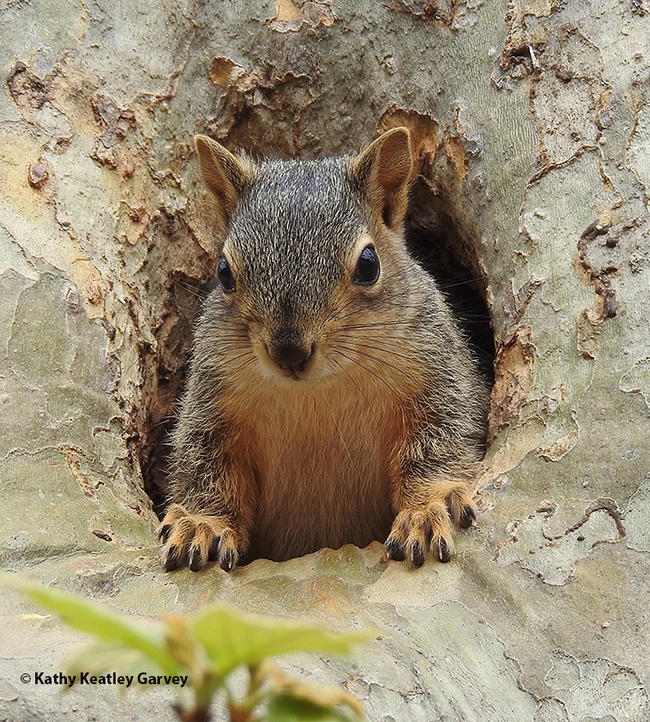
Occupied! No vacancy! The squirrel is aware that bees are circling, trying to move into "his" hollow. (Photo by Kathy Keatley Garvey)
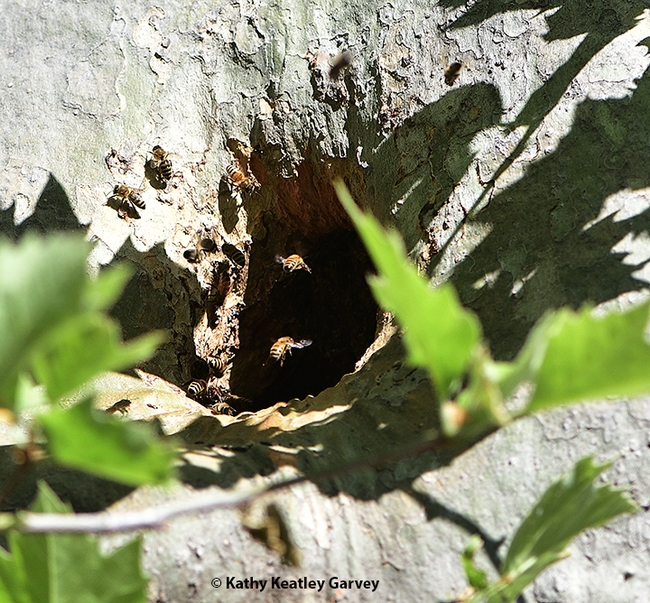
With the squirrel gone, honey bees quickly move into the hollow. (Photo by Kathy Keatley Garvey)
Feral Bee Colony in Kenya: Nothing Short of Incredible
"EVERYTHING that colonies do when they are living on their own (not being managed by beekeepers) is...
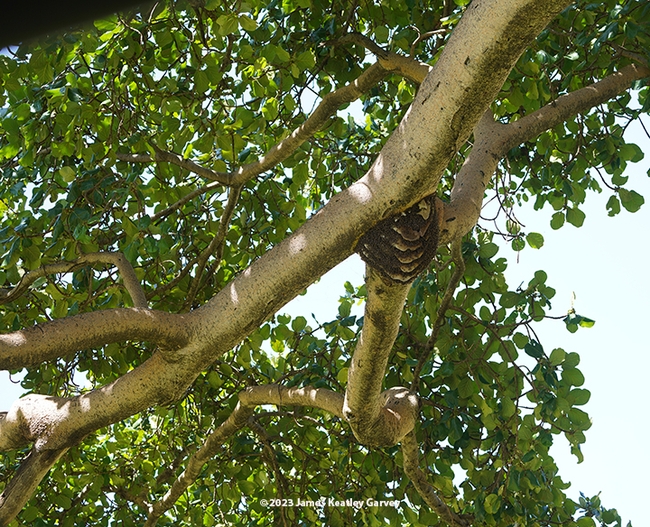
A feral or wild bee colony in a fig tree in the Maasai Mara National Reserve, southern Kenya. (Photo by James Keatley Garvey)
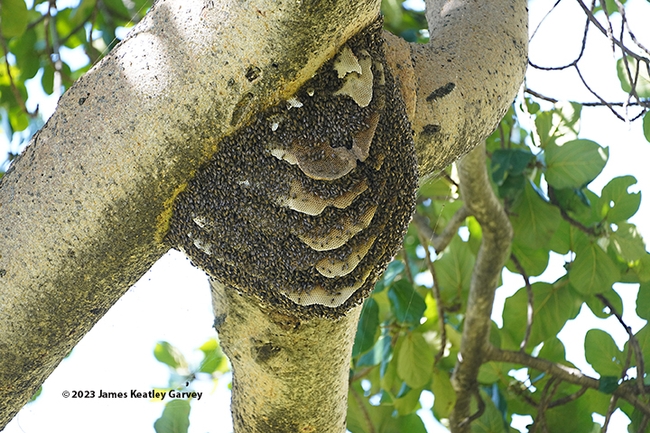
Close-up of a feral or wild bee colony in a fig tree in the Maasai Mara National Reserve, southern Kenya. (Photo by James Keatley Garvey)
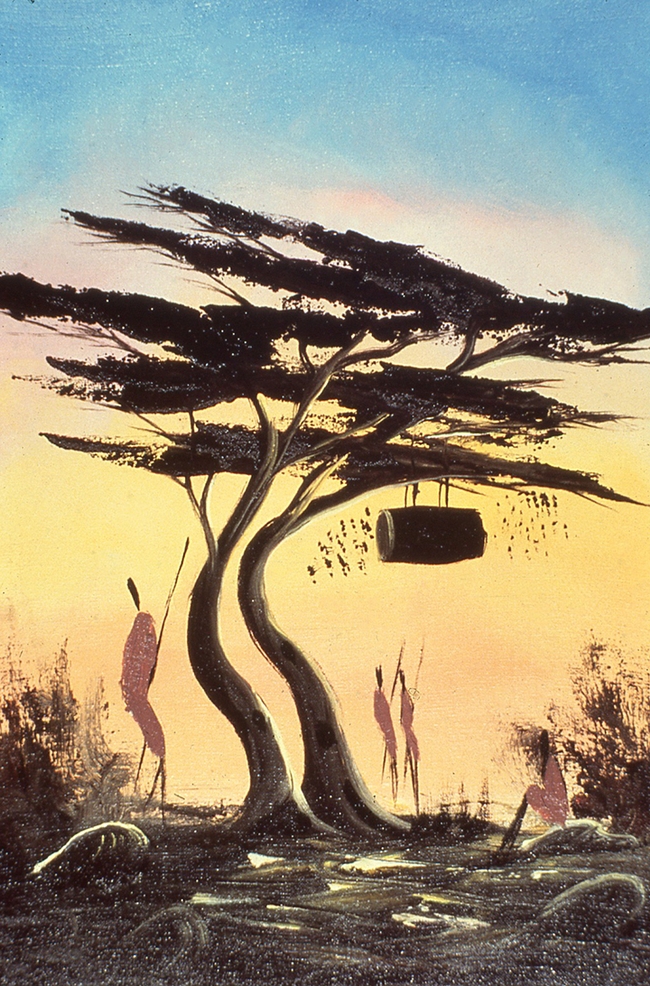
This image is of a painting of a log hive that Cornell professor Roger Morse purchased in a market in Kenya in the 1970s. (Photo courtesy of Thomas Seeley)
Remember "BSI: The Case of the Disappearing Bees?"
Remember the alarm, the anxiety and the agony when news first surfaced about colony collapse...
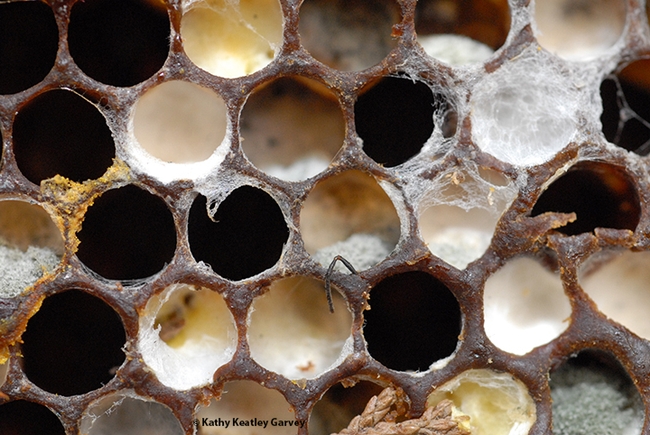
Close-up image of cells in an abandoned hive; colony collapse disorder suspected. Note the bee antenna near the center. And the mold. (Photo by Kathy Keatley Garvey)
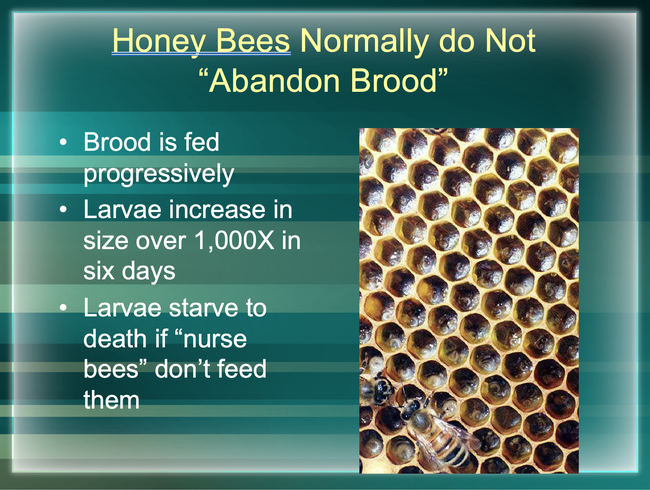
One of the slides in Eric Mussen's presentation on colony collapse disorder.
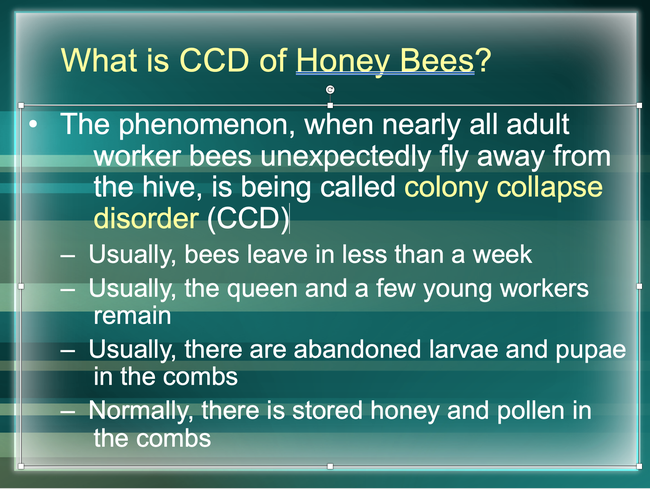
Extension apiculturist Eric Mussen briefly explained colony collapse disorder in this slide.
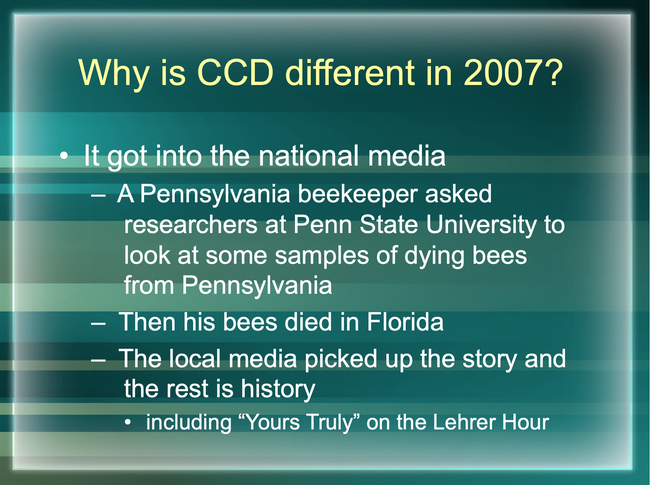
In this slide, Extension apiculturist Eric Mussen explained what sparked the colony collapse disease fury.
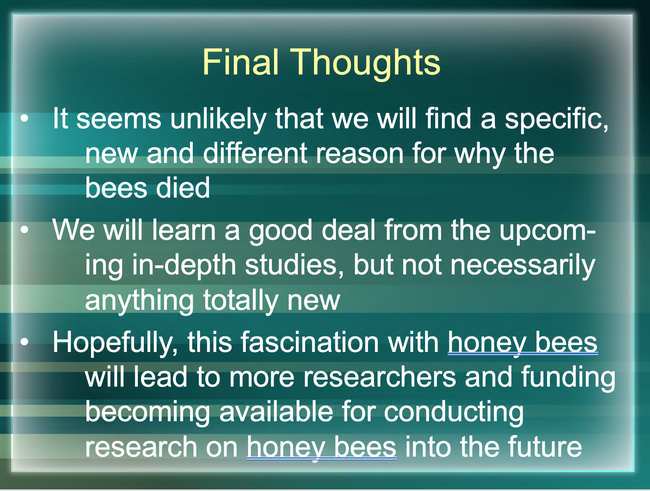
Extension apiculturist Eric Mussen detailed final thoughts about colony collapse disorder in this slide.
I'm Just a Little Ol' Honey Bee Foraging on Lavender
I'm just a little ol' honey bee foraging on lavender. I left my warm colony in Vacaville, Calif....
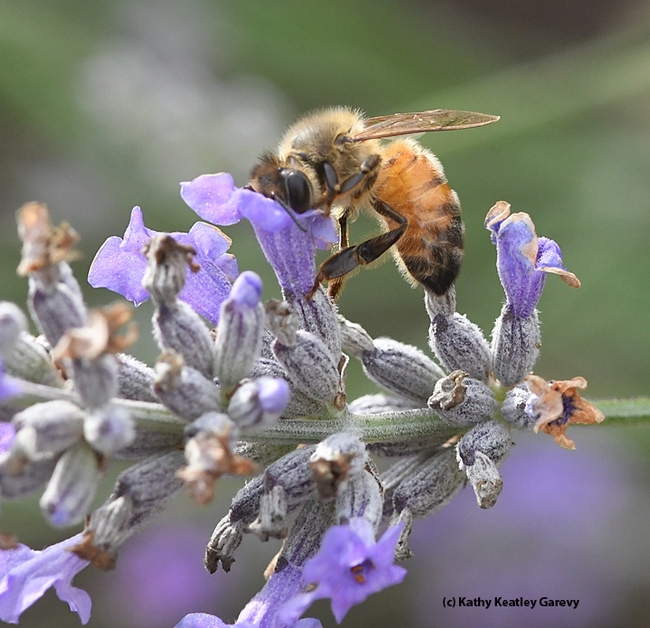
Peek-a-bee! Hi, it's just me, a honey bee foraging on lavender in mid-December in Vacaville, Calif. (Photo by Kathy Keatley Garvey)
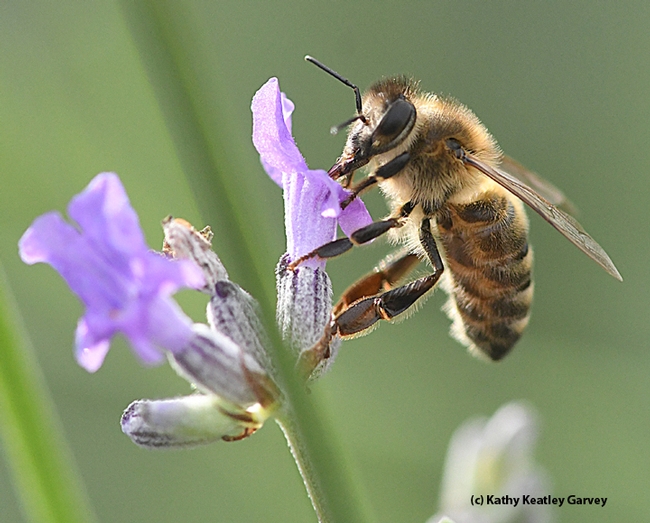
Ahh, nectar! See my tongue (proboscis)? (Photo by Kathy Keatley Garvey)
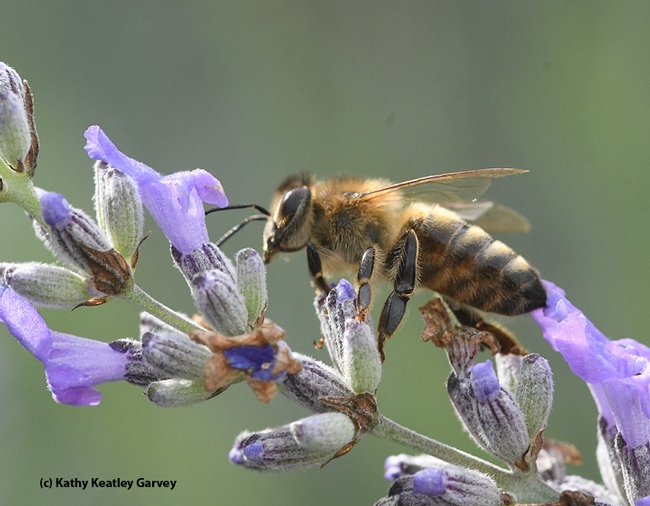
I think I'll crawl over to the next blossom. Nobody around to stop me! (Photo by Kathy Keatley Garvey)
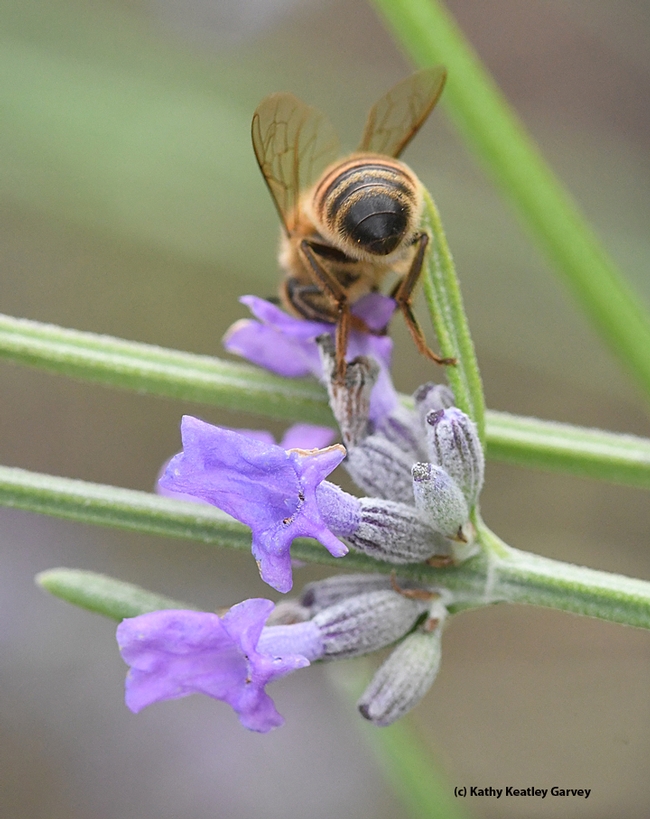
Bye, bye! That's it for me. (Photo by Kathy Keatley Garvey)
August 19th is National Honey Bee Day: Dr. Elina Niño reminds us to help honey bees cope with pests.
National Honey Bee Day is celebrated on the third Saturday of every August. This year it falls on Saturday the 19th. If you use integrated pest management, or IPM, you are probably aware that it can solve pest problems and reduce the use of pesticides that harm beneficial insects, including honey bees. But did you know that it is also used to manage pests that live inside honey bee colonies? In this timely podcast below, Dr. Elina Niño, UCCE apiculture extension specialist, discusses the most serious pests of honey bees, how beekeepers manage them to keep their colonies alive, and what you can do to help bees survive these challenges.
To hear the audio recording, click here.
To read the full transcript of the audio, click here.
Successful IPM in honey bee colonies involves understanding honey bee pest biology, regularly monitoring for pests, and using a combination of different methods to control their damage. Visit these resources for more information:
For Beekeepers:
The California Master Beekeeper Program
For All Bee Lovers:
Haagen Dazs Honey Bee Haven plant list
UC IPM Bee Precaution Pesticide Ratings and video tutorial
Sources for the Value of Honey Bees:
Flottum K. 2017. U.S. Honey Industry Report, 2016.
